The Muong Cultural Space Museum is located on a hillside about 7 km from the center of Hoa Binh City (Hoa Binh Province). That space recreates a Muong society from more than a hundred years ago, divided into social strata by the owner, artist Vu Duc Hieu, with the Lang family at the top, and the Lang family's servants below, called the Au family. The common people are the Noc family, the next level is the poorest in society, who have committed a crime against the Lang family and violated the village law, called the Noc Troi family.
The museum is also a place to recreate the daily life of the Muong people, including utensils, living spaces, handicrafts, etc. displayed based on the social life of the Muong people in the past. In addition, there are specialized galleries, emphasizing handicrafts such as weaving, fishing, and cultural activities, etc. Visitors can visualize the Muong cultural story through specific artifacts in a short time.
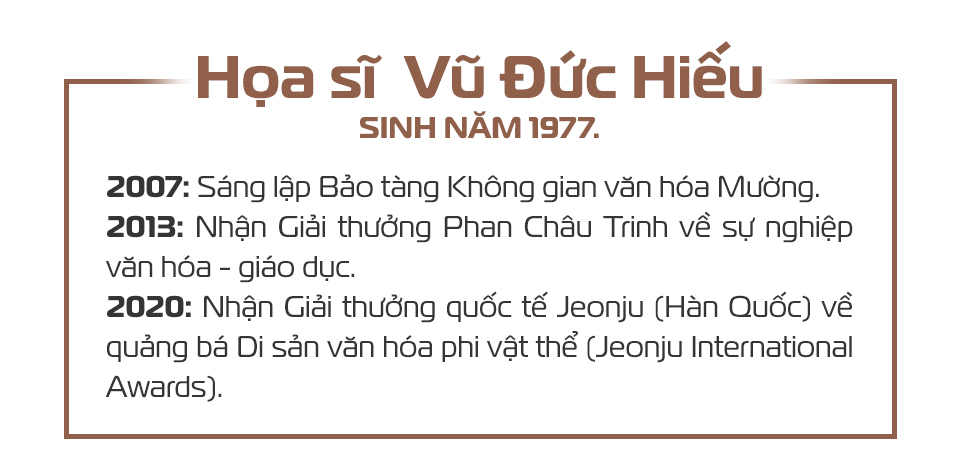

Is the Muong cultural space now different from when it was formed?
Basically, it is not much different, it is still a story of recreating the Muong social living space, but developing in a new direction, focusing oneducation , bringing the Muong story to schools, from kindergarten to university students. Since 2011, the Ministry of Education and Training has brought heritage education into schools, I have taken that opportunity to develop Muong culture through education. The young generation coming to the museum has a separate program according to their age. I have prepared for this since 2008, starting to initiate education associated with heritage, offering activities, programs, life skills, connecting to the Muong cultural story and education through practical experiences such as weaving, building tents, building sheds, making fires, lessons about knives, about materials, introducing the story of building houses of the Muong people, architecture, daily life, farming, gathering, thanks to which the children have an impression, remember the activities, that is how the museum spreads the cultural story to students.
Muong cultural space , hearing the name easily evokes ancient, traditional, folk feelings, but when approaching, you see a very strong contemporary mark?
Actually, right from the beginning, Muong Cultural Space still had a contemporary section because I am an artist who works in the arts and wants to combine culture and art. The museum has organized many contemporary art festivals for domestic and foreign artists. Artists are the ones who help spread Muong culture through their feelings and have creations and exhibitions. That is the fastest and closest way to create a combination of culture - tradition and art - contemporary.

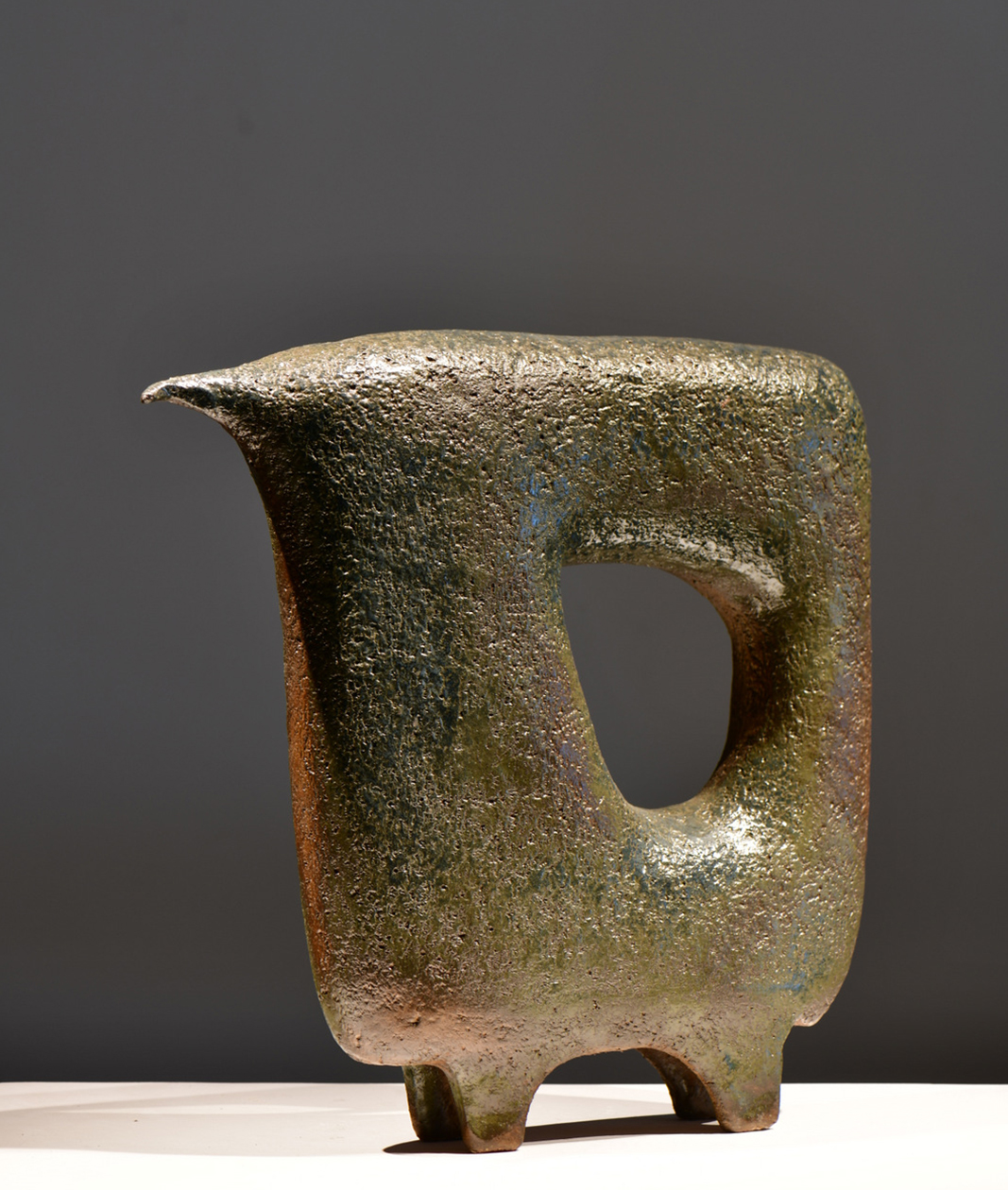
Using all indigenous materials and spirit, Muong pottery shapes a unique beauty.
Muong cultural space hosts many regional and international art events. What have you learned from such events?
I have participated in many art programs in many countries and have found that cultural and artistic stories are the fastest way to reach the community. When people watch artists create, they also improve their view of art and aesthetics, which is a condition for them to approach other cultures. The same goes for international artists. Through the people, they understand local culture better. An advantage of art events at the Muong Cultural Space is that domestic artists do not need to travel far but still have the opportunity to exchange and discuss their profession with international artists, which is a bridge leading to many other art activities.
Doing business is difficult, doing culture to support the machine, colleagues, and family is much more difficult. What makes Muong Cultural Space overcome even the most difficult times?
It’s a bit difficult to answer, because building really costs a lot of money, operating it costs even more, especially maintenance. But perhaps thanks to my affinity with Muong culture, the more I do it, the more it feels like... heaven’s blessing, whenever I need to do something, there will be work or financial resources, and then friends, brothers, teachers, family... create the best conditions for the work to be completed. As for the difficulties, they are constant, nothing has ever been easy.
What are the challenges of running a cultural museum, other than finances?
When I did everything, the law was not clear. In 2011, there was an amendment to the Heritage Law. For example, before 2011, non-public museums were not allowed to organize service activities, but only after that. Public museums were 100% funded, and the artifacts were collected by the state; in the Muong Cultural Space, everything had to be self-made, and not organizing services was extremely limited. Thanks to the amendment to the Heritage Law, the story of private museums became easier and more convenient.
The "Muong" quality is evident in Vu Duc Hieu's ceramic technique
Composing, managing, operating a museum, then family and children, what is the secret to helping you balance it all?
Before that, my family lived in Hanoi. When my children grew up, I kept going back and forth between Hanoi and Hoa Binh. It was too hard, so I gradually moved my wife and children to Hoa Binh and lived in the museum. Thanks to that, raising children and taking care of the family was more convenient, and creative activities right at the museum were also fine.
Have you ever felt discouraged in your nearly 20-year journey of playing with something that sounds so familiar but is so vague: culture?
It's very discouraging, not everyone understands the cultural issue easily, even in the family it takes a lot of time to convince, because the time, effort, and money spent to preserve the culture, but every year the harsh weather causes artifacts and cultural relics (all bamboo, wood) to deteriorate quickly, maintenance is a headache. Seeing the collections getting damaged, termite-eaten, degraded every day, it's terribly discouraging, plus many other difficulties, from house fires (the incident where tourists burned down Lang's house which is over 100 years old - PV), epidemics, closure of activities, but thanks to everyone's encouragement, we have tried to hold on until now.
To preserve Muong culture , many people do it in a conservation or museum style. How do you do it?
I present to the public a miniature Muong society, visitors can listen to stories in an open space, approach original artifacts, thereby being able to see the artifacts vividly, know what each artifact is made of, how it is, and the story associated with it. Before, I brought people to live in that house so that visitors could exchange directly. I want visitors to access Muong culture as quickly as possible through storytelling, customs, and rituals in the visiting space, not through displaying each artifact individually and then attaching an introduction board.
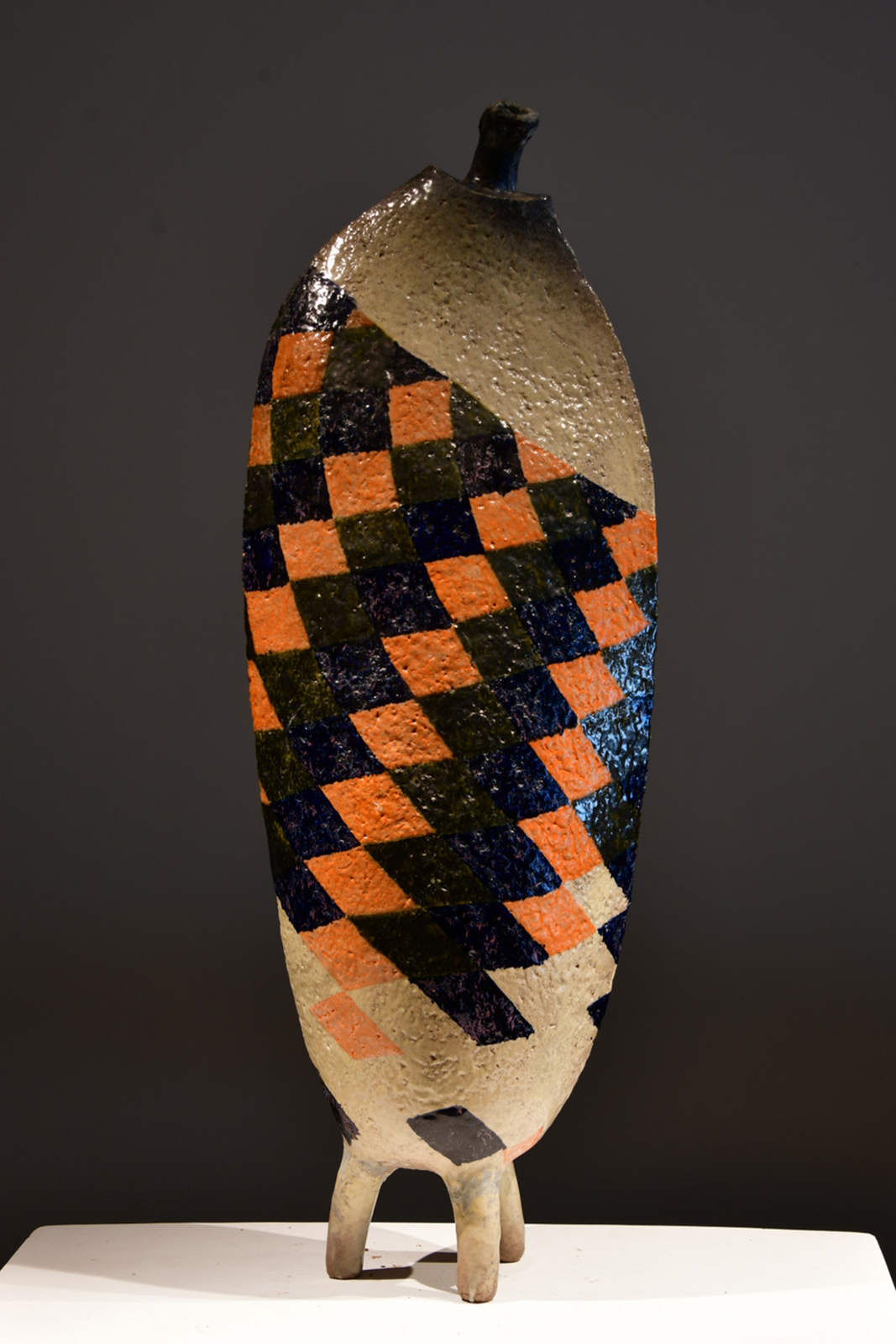
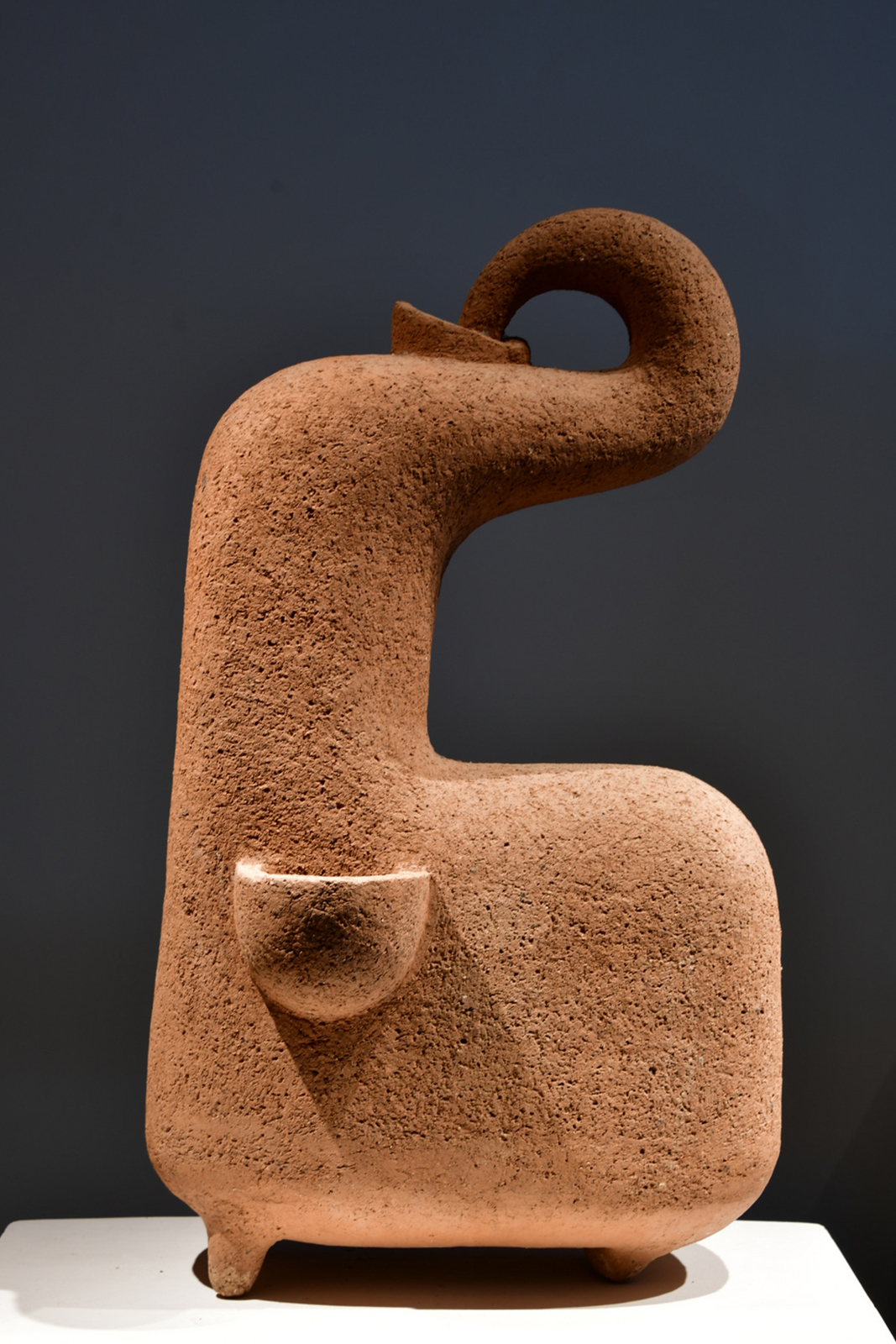
A unique shape in Vu Duc Hieu's Muong pottery collection

Community art in Muong is a strength of the museum, can you share about this form of organization?
The initial goal when it was formed was to bring international artists to Vietnam to spread Muong culture. International artists live and work in the cultural space, when they return they can tell their friends and relatives, and through their own works based on the inspiration of cultural stories, that is what the Muong Cultural Space has. I continue to promote that community activity, because through it many people benefit, local people participate in activities with artists, helping them understand culture better, their aesthetics also improve, understand more about art, about other cultures and ethnic groups; and vice versa, artists understand more about indigenous people. Artists come to create and leave many works, creating a diverse collection for the Muong Cultural Space, culture and art go hand in hand. At the end of 2024, I will launch another art space including museum collections after nearly 20 years of operation.
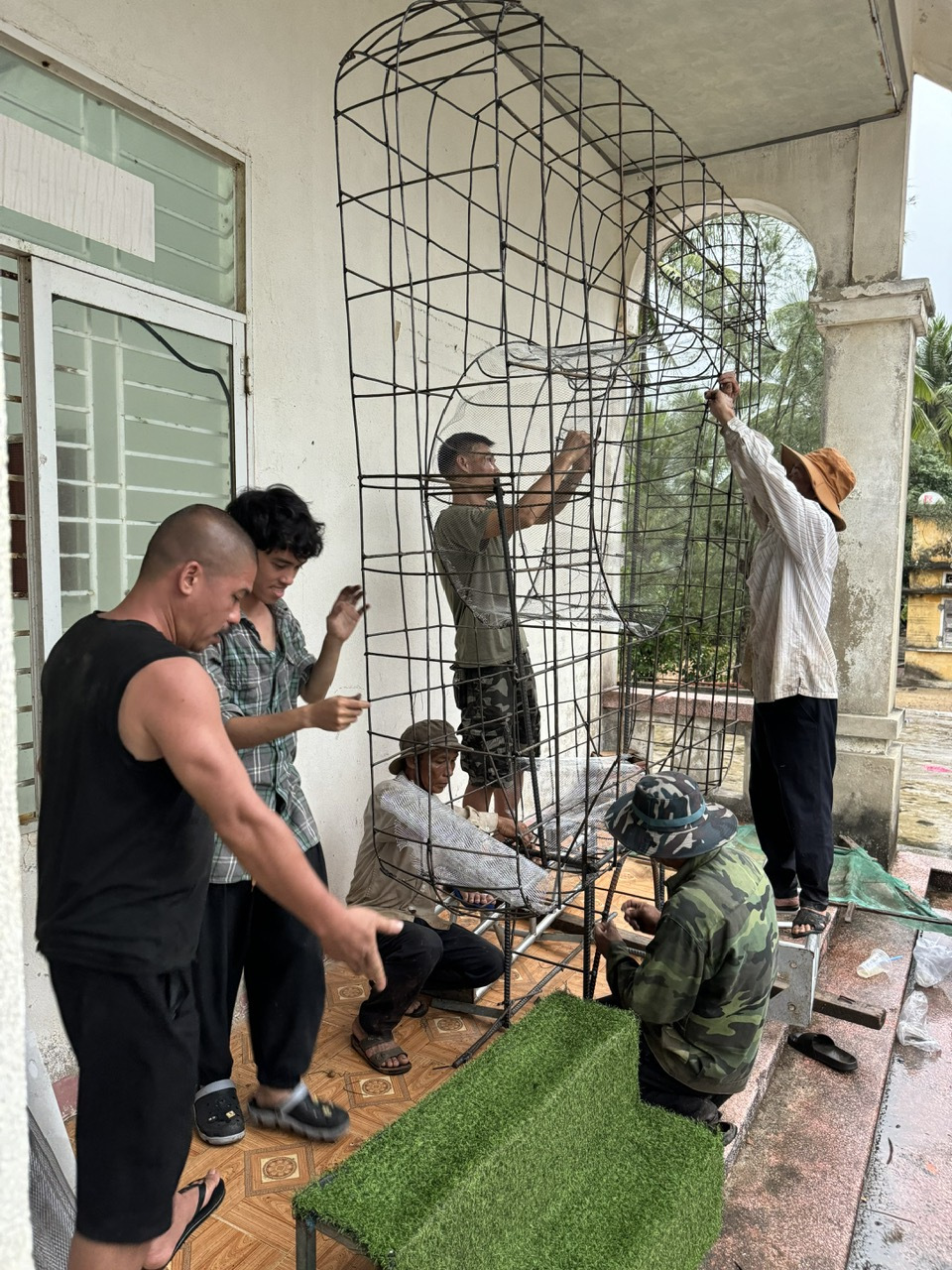
Vu Duc Hieu (left corner) collaborated with Tam Thanh residents to create an artwork.
From the initial indigenous imprints, Muong Cultural Space is now a place where many artists come to reside, compose, perform, install, exhibit... Can you share the story of gathering artists to this place?
At first I thought it would be difficult, but I didn't expect the support of artists. When I talked about preserving culture, people from all over the country and internationally were willing to support me, so the activities became simple. Muong cultural space has many activities related to artists, such as the restoration of Lang house, calling for contributions from artists, and auctioning after the fire accident at the ancient Lang house in 2013. These activities are widely supported because artists are interested in preserving culture.
In recent years, community art has spread widely , becoming an annual activity such as Tam Thanh Community Art Village. From an artist's perspective, what is your opinion on community art?
The concept of community art is very broad, this model is quite familiar in other countries. In Vietnam, I often organize activities to connect artists with people, in many forms, the story of Tam Thanh is an example. In 2016, I was invited to join the local economic development group in Tam Thanh (Tam Ky, Quang Nam), conducting a survey of the fishing village space. Tam Thanh was a place that no one knew about at that time. To do community art, the method was to take advantage of local conditions, ask people for discarded materials and use those materials for artists to create art. Initially, Tam Thanh was called a mural village, then called an art village, converging many fields such as sculpture, painting..., attracting famous artists from all over the country to participate in annual activities, turning Tam Thanh into a destination for artists and visitors, and people benefit from it.
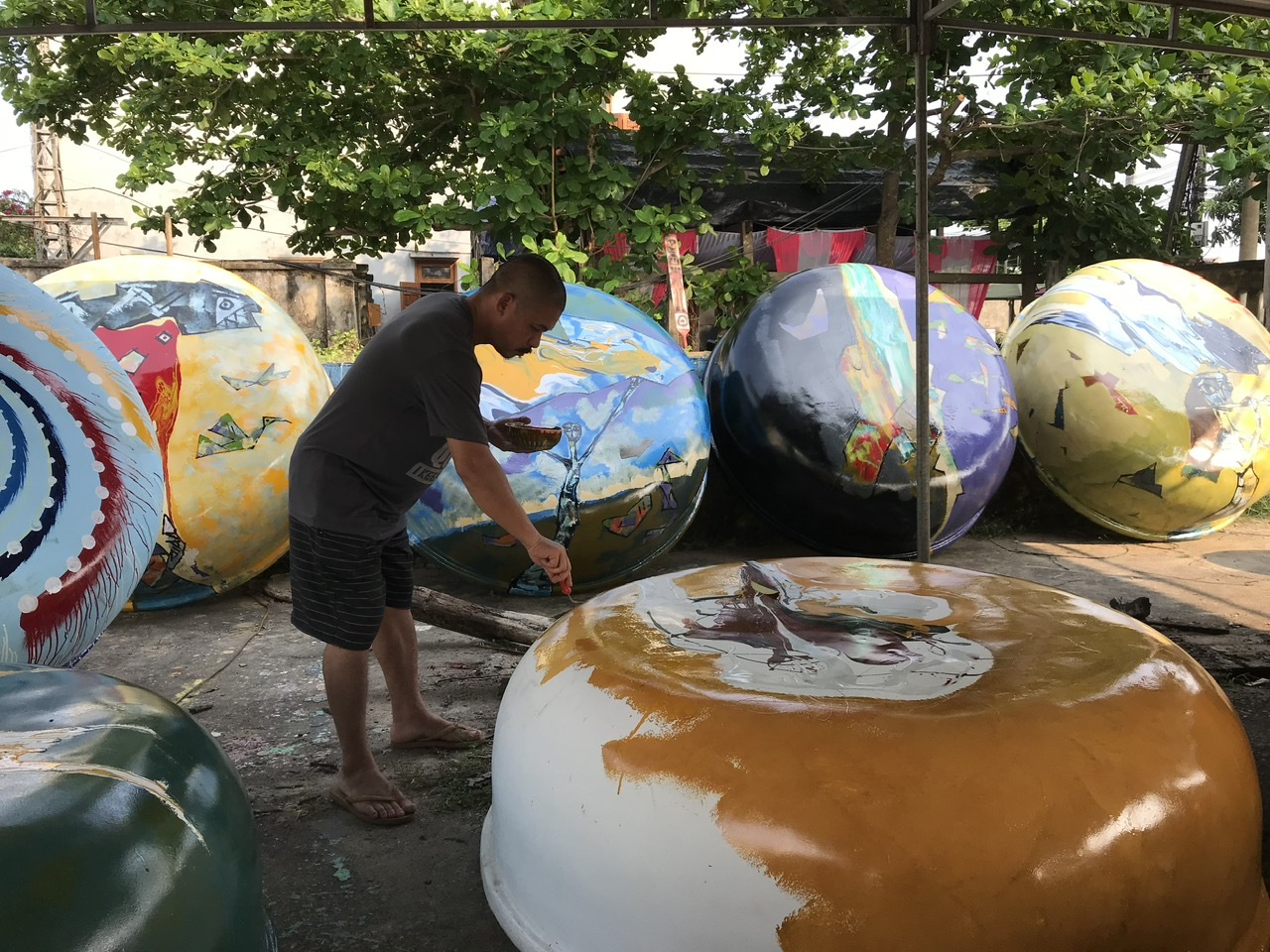
Artist Vu Duc Hieu on a creative trip to Tam Thanh in May 2024

Back to the indigenous story, you used to tinker with pottery, and called it Muong pottery, why?
The story of coming to pottery was quite coincidental. In 2014, I met ceramic artist Bao Toan and was invited to play pottery. At first, I imagined that pottery was complicated because this subject was basically not like painting or sculpture, because it involved soil, glaze, kiln, and complex crafting tools. When I started doing it, I unexpectedly found a connection with pottery. After only 2 months, I held a pottery exhibition at Module 7. Up to now, it has been 10 years of playing - learning - working with pottery. Calling Muong pottery is a way of naming, because it uses the main materials in Muong land, from ash glaze, trees, stones, soil, Muong space, so it is called Muong pottery, but Muong people do not make pottery.
As an artist, playing with Muong culture, when switching to Muong pottery, what do you hope to find in it?
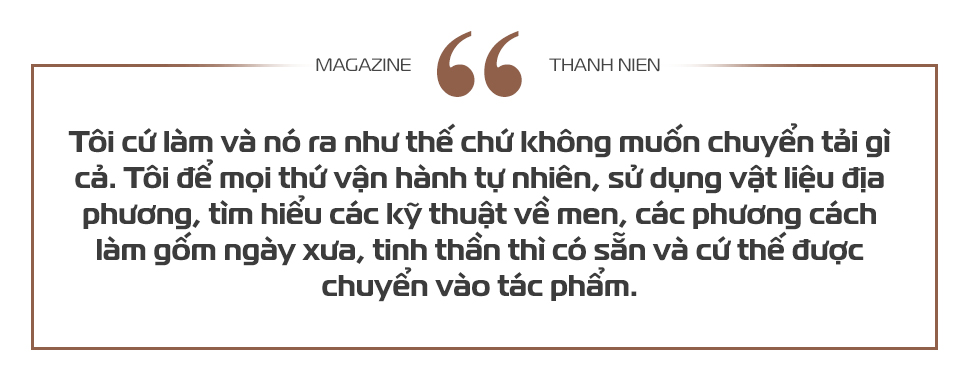
And how is the result of pottery for you so far?
Ceramics is a very diverse thing, never knowing when it is enough, the more you search for it the more it seems far away, the more you make it the closer it seems but difficult to grasp. I need more time to understand ceramics and also want to develop in many directions and forms in this spirit.
If we describe Muong pottery, it is easy to imagine it is something very ancient, how would it be explained in Hieu Muong's style?
The shortest way is Muong pottery, someone told me to use the name everyone usually calls me Hieu Muong pottery.
Your latest series of works shows strange shapes and fascinating transformations. Can you briefly introduce them?
Ceramics in general are often limited to a single function, making ceramics for something, when shaping like that, the answer immediately comes to mind that ceramics are bowls, plates, flower vases..., things that are closely related to daily life. I want a different story, in addition to the common shapes, the default ones, I bring the experimental ceramic material into a more diverse and rich language, the same goes for the glaze technique. It can be seen in ceramics that many structures break the round and cylindrical shapes. Ceramics depend on the block and shrinkage of the material, so it somewhat limits creativity. I use many physical expressions and designs, making ceramics more diverse, suitable for modern life, surpassing the usual function of being a container. I want to create a type of ceramic that can go further in art.
Your "Muong" is in Hoa Binh , do you intend to take it further?
Yes, especially with pottery, I consider it as one of the materials and forms used to introduce the story of Muong culture. The latest series of Muong pottery works I have brought back to Hanoi, are being completed for display, and are expected to be launched next August.
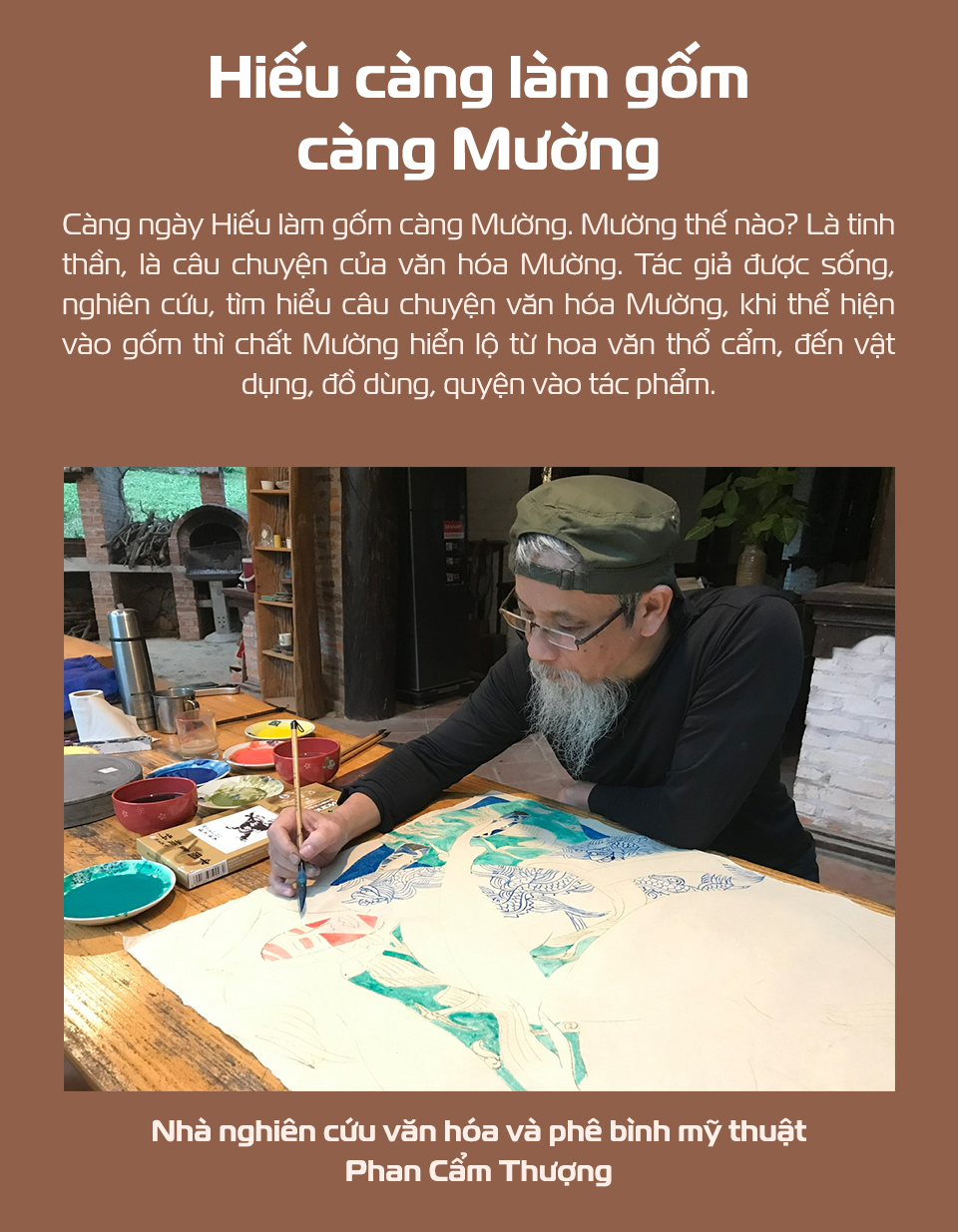
Source: https://thanhnien.vn/hoa-si-vu-duc-hieu-dem-muong-di-muon-noi-185240615221946586.htm



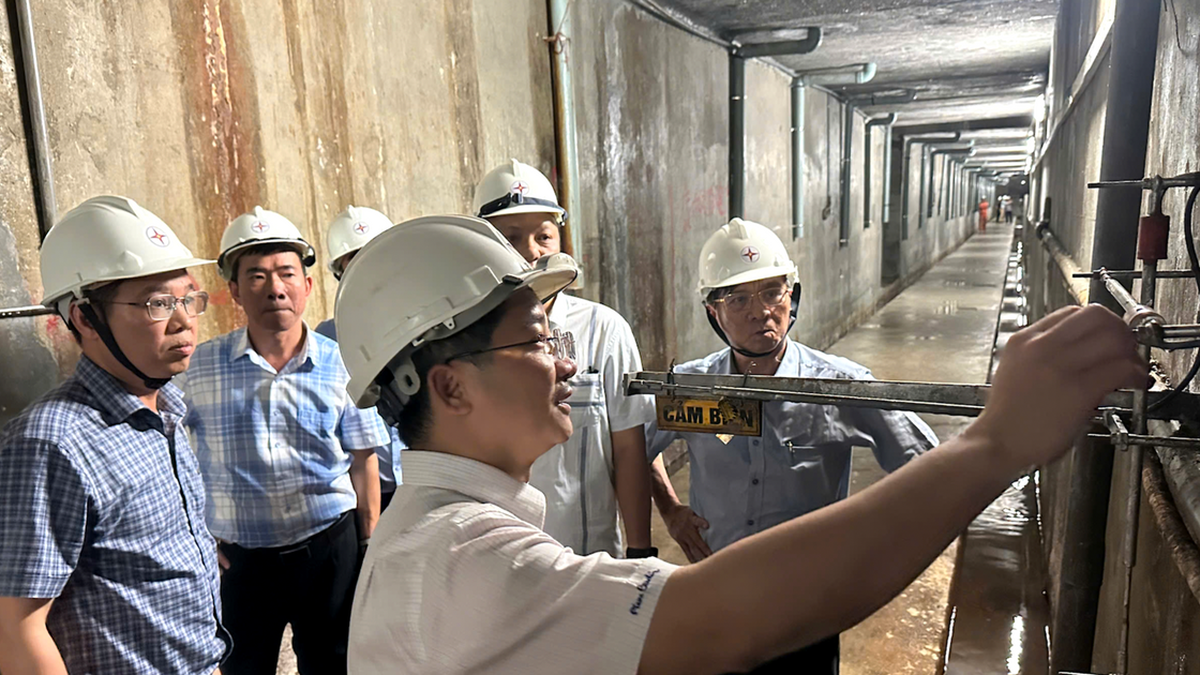


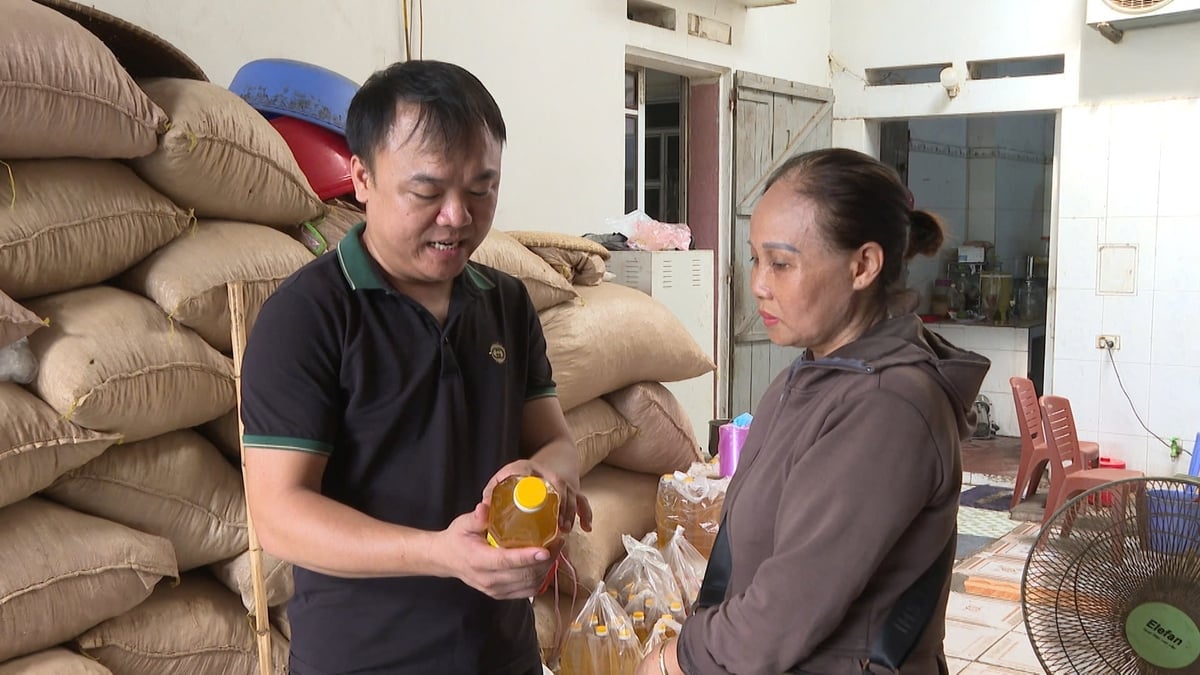



















![[Photo] National Assembly Chairman Tran Thanh Man visits Vietnamese Heroic Mother Ta Thi Tran](https://vphoto.vietnam.vn/thumb/1200x675/vietnam/resource/IMAGE/2025/7/20/765c0bd057dd44ad83ab89fe0255b783)








































































Comment (0)